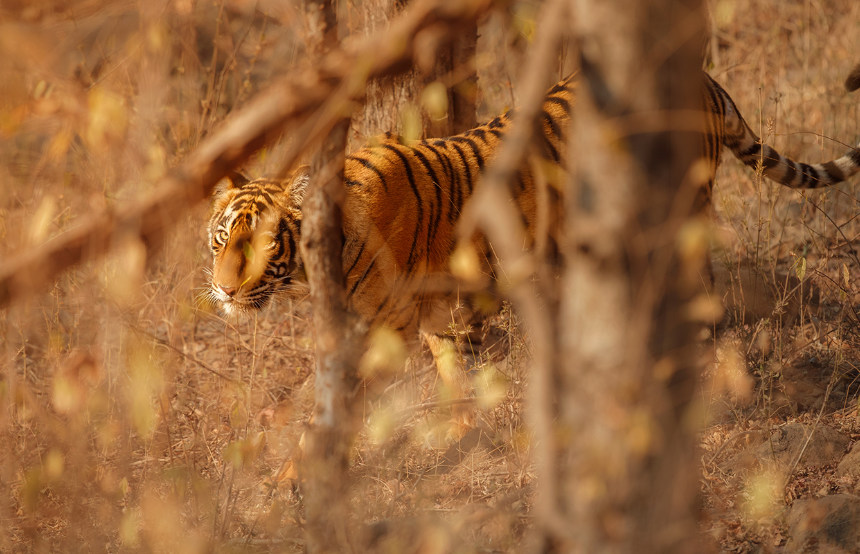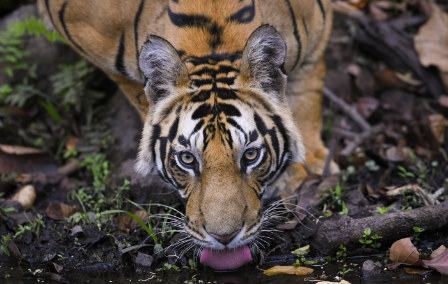
Published 3rd Mar. 2025
Reading time
Jaguars are the largest of South America's big cats, and, unfortunately for us, are perhaps the most elusive. With their sleek orange-brown fur and distinctive black spots (known as ‘rosettes’), jaguars are truly magnificent, so it’s no surprise that wildlife enthusiasts will go to great lengths to spot one.
But where to find them? With their impressive hiding skills and nocturnal nature, it’s no mean feat to catch a glimpse of one of these majestic predators, so we’ve compiled a shortlist of places to give you the best chance possible. Cameras at the ready? Read on for our list of the best places to see jaguars…
If you want to see jaguars, then the Pantanal is the place to go. This tropical wetland spans over 42 million acres and three South American countries, with most of its area concentrated in Brazil. Declared a UNESCO World Heritage site in 2000, the region is home to an estimated 5,000 jaguars, and its impressive biodiversity means that the big cats have access to a range of food, water and shelter.
For the best chance to spot a jaguar, head to the Cuiaba River in the northern Pantanal, where you can hop onto a boat tour and drift gently down the river. As the jaguars here are largely undisturbed by their human counterparts, they are unfazed by the presence of the boats and come right down to the riverbanks. If you’re in the southern Pantanal, book a stay at Caiman Ecological Refuge, where the Oncafari Project is based. This ecotourism NGO seeks to protect the region’s jaguars, and it's clearly working: today, 100% of guests report seeing a jaguar, compared to a paltry 7% in 2012.

Image by Gerald Corsi / Getty Images.
Next up on our list of the best places to see jaguars is Costa Rica. This colourful country is home to a range of national parks, many of which contain a small population of jaguars. For the best chance of seeing these big cats slinking through the undergrowth, head to Corcovado National Park. Conservation efforts in the park mean that there have been more and more sightings in recent years, including glimpses of baby cubs with their mothers – a welcome indicator that initiatives to increase endangered populations are working.
Tortuguero National Park is also a fantastic place to spot jaguars, as high numbers of sea turtles provide a veritable buffet for the hungry predators.
Located in south-central Belize, Cockscomb Basin Wildlife Sanctuary was established specifically to protect jaguars, so it’s no surprise that it’s one of the best places to see these wild cats. Years of big cat hunting led local politicians to call for conservation initiatives, resulting in the reserve being declared a protected area in the 1980s.
As they’re pretty good at playing hide-and-seek, we can’t guarantee you’ll see a jaguar in Belize, but the 200-strong population gives you a fighting chance of catching a glimpse of one (or perhaps a trail of large pawprints). Alongside their jaguar population, Cockscomb is home to lush flora, wonderful wildlife and a huge range of tropical birds, making a visit to the sanctuary an animal lover’s dream.

Image by Carol Farneti Foster / Getty Images.
Sustainable tourism is pretty close to our hearts, so the Iwokrama Rainforest’s commitment to ecotourism and wildlife conservation takes it right to the top of our bucket list. Here, all revenue raised by tourism is funnelled back into local human and wildlife populations, meaning that the ecosystem remains largely undisturbed and thriving.
As if it couldn’t get any better, Iwokrama Rainforest is renowned as one of the best places to see jaguars – so much so that the BBC released a docuseries based on the Guyanese region in 2008, titled Lost Land of the Jaguar. It’s worth noting that the rainforest is pretty dense, with trees and leaves tightly packed, so it can be easy to miss jaguars as they roam through. Despite this, there is currently a record high of reported jaguar sightings, so keep your eyes peeled and ears perked up for any signs of the big cats.
Manu National Park boasts remoteness and vast biodiversity: the perfect conditions for a jaguar. In the summer months, this UNESCO World Heritage site sees cooler temperatures due to a waft of cold air drifting over from the Atlantic. The break from normal Peruvian heat draws jaguars out into the open, meaning travellers are much more likely to see one roaming about in the daytime. As with some other sites we’ve mentioned, we can’t promise that a jaguar will grace you with its presence, but there’s plenty to keep you entertained. Our Conde Nast Traveler Top Travel Specialist for the Americas, Ollie, describes the park as an ‘amazingly wild experience’ – think mischievous monkeys, adorable otters and thousands of tropical birds – so it’s worth a visit at any time of year.

Image by ECS Gallery / Getty Images.
Written by Emma Begley | Header image by Javier Fernandez Sanchez / Getty Images.
Practical advice and inspiration for your next trip

Searching for the best safaris in India? We’ve got you covered. Whether you’re keen to track tigers in Madhya Pradesh, admire Asiatic lions in Gujarat or photograph forest eagle owls in Kerala, your India holiday awaits. While Bengal tigers steal the limelight in Bandhavgarh National Park, don’t forget about the shaggy sloth bears (though they’re not as cuddly as they look). Feeling up for the adventure?
15th September 2025 - India Safari & Wildlife

With their sleek, tangerine-tinged coats, piercing eyes and commanding presence, nothing beats the thrill of seeing a tiger in the wild. And where better than in India, home to the largest population on Earth? But when it comes to the best time to see tigers in India, it all depends on what you want from your trip. Whether you’d rather vivid green landscapes or crowd-free safaris, we’ve got the insider intel on when to see India’s famous big cats.
23rd June 2025 - India Safari & Wildlife

Where are the best places for whale watching? We’re glad you asked. From the picturesque Icelandic town of Husavik to the coastal haven of Mirissa in Sri Lanka, there are plenty of destinations to marvel at these majestic creatures. Picture this: the air is still and all you can hear is the creaking of the catamaran and the odd, excited whisper. You scan the horizon, desperate to spot the tip of a fluke or a distant plume of whale breath.
16th June 2025 - Safari & Wildlife

Our team of destination experts will get to know you and your unique requirements for your holiday

We work with you to build an ultra-personalised holiday itinerary with your choice of accommodation, experiences and activities

All of our holidays include little extras designed to make a big difference to your trip, from fast-tracking you through airport check-in and security to our network of local Concierges